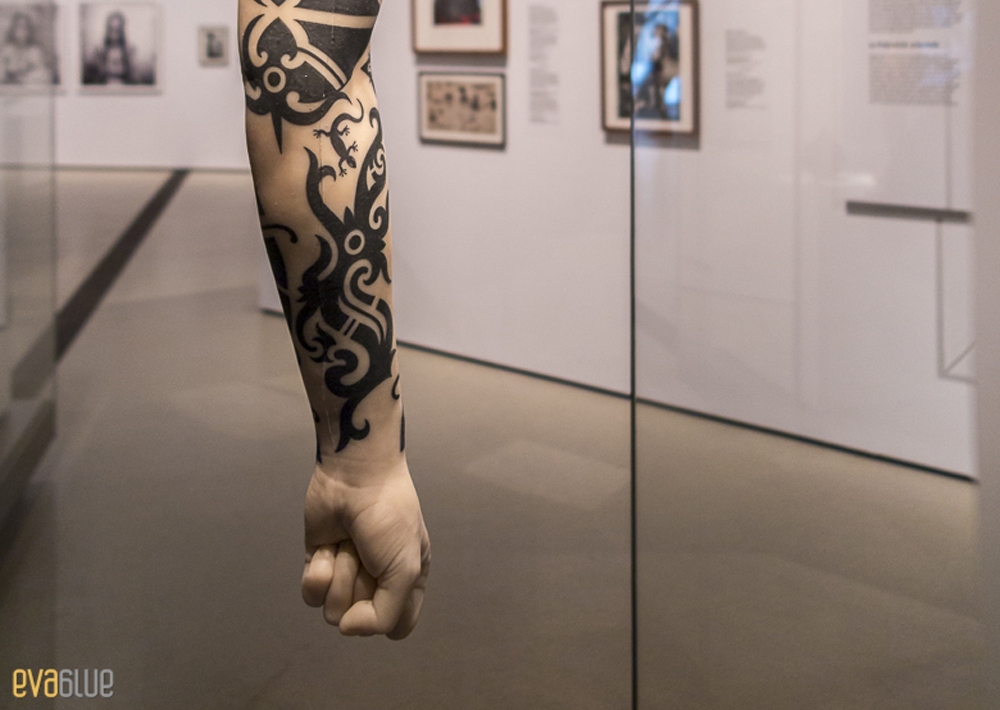Cristina Maria Lupoi | Contributor
Featured image: The ROM’s exhibit on tattoos digs deeper into the cultural, historic and global implications of the art form. | Courtesy of Eva Blue (Flickr)
Tattoos are everywhere. Take a glance around and it will not take you long to locate someone with a tattoo. Maybe your friend tattooed his ex-girlfriend’s name on his arm, or maybe your grandpa has a tattoo hidden away from his rock n’ roll days. Maybe you have a tattoo yourself. If so, you might have found yourself exploring this unique art form in a museum exhibit.
This year the Royal Ontario Museum, or ROM, hosted an exhibit dedicated to showcasing the diverse body art form of tattooing. Tattoos: Ritual. Identity. Obsession. Art, opened its doors on April 2, 2016 and closed on September 5, 2016. Visitors were invited to an exhibition that not only displayed the uniqueness and variety of tattoos, but also the traditional, historical and cultural context associated with this intrinsic art form.
The exhibit enabled onlookers to have a multifaceted learning experience. Spanning over the course of 5,000 years, the exhibit provided a history of both ancient and modern tattoos, while also paying tribute and highlighting some of the world’s most famous and talented tattoo artists, such as Sailor Jerry, and their respected pieces. This was done using various visual aids, artifacts, posters and silicone figures that were used to reproduce tattoo pieces.
Tools that were used to draw tattoos were scattered all over the museum. One of the more complex and inventive tools featured was a handmade tattoo gun crafted by prison inmates. Using the limited supplies available, the prisoners were able to use ball point pens, wire and spool to create electric and manual machines.
The exhibit also provided a historic and cultural context for tattoos, exploring how tattoos are regarded in America, Asia and Europe. In a historical context, the museum displayed photographs of the chests of Auschwitz prisoners in Nazi camps and the identification tattoos the Nazis’ inked onto the inmates’ skin. Juxtaposed with these pictures were the bodies of the grandchildren of some of these survivors, who tattooed the identification numbers onto their skin as a way to remember and honour their family and family history.
On a cultural level, the museum explored what tattoos meant to different cultures, such as the Japanese. This was explored through a documentary video that interviewed famous and rewound Japanese tattoo artist Horiyoshi III, who specializes in full body tattoos. Horiyoshi III said that tattoos are important to the Japanese culture he caters to because they view tattoos as a symbolic and personal expression. When a person goes out to the workplace, they are seen as that person; a doctor, a lawyer, a teacher. However, once they are in their naked form, their tattoos became their own personal, symbolic expression of their true inner identity. In a Japanese cultural context, tattoos are essential in cultivating modes of personal identity and expression.
Every empty space, every wall and every corner of the tattoo exhibit was scattered with unique information on tattoos and the rich history that accompanies it. Whether you have your own obsession with tattoos, want to learn more about this ancient form of body art, or have a burning passion for history, the exhibit satisfied all these interests. What was most amazing about the exhibit was the way it took tattoos and gave them an identity not many would expect. In modern society, tattoos are met with mixed reactions, but a spectator who went to the exhibit would have left with a newly found perspective that hopefully allowed them to see that tattoos are more than just ink on skin; they are a tool for cultures to cultivate identities that penetrate external surfaces.


